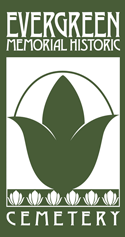
John Wesley North as a young man
John Wesley North
John W, North, Riverside’s founder, started out in the northeast, studying to be a minister. His abolitionist fervor led him to support that cause full-time and when he saw that the church failed to take an active enough role in fighting slavery, he turned to the law as his profession. Settling in Minnesota, he became an instrumental person in forming Minnesota’s new state constitution and founding the University of Minnesota. His first attempt at founding a new town, Northfield, left him financially over-extended, and in the Panic of 1857, he was ruined financially.
In 1860, he was a delegate to the Chicago Republican Convention which nominated Abraham Lincoln for the presidency of the United States. North was a member of the committee that went to Springfield to notify Lincoln of his nomination.
In 1861, President Abraham Lincoln appointed North to be the Surveyor-General of the new Territory of Nevada, whose silver had become critical to Union interests in the Civil War. North became a judge and, in that role, he ran afoul of large mining interests with his rulings in favor of smaller mines worked by individuals. He was slandered and harassed by a Nevada lawyer against whom he won a slander judgment, but North became ill and resigned.
North tried again to pursue his egalitarian dreams in Tennessee, but his intervention in a lynching caused a local boycott of his foundry business and he again lost everything. With James P. Greves, a friend from his Nevada days who was also in Tennessee, North decided to pursue his dream of a “colony of intelligent, industrious and enterprising people, so that each one’s industry will help to promote his neighbors interests as well as his own.” In September 1870, North, Greves, and other colonists purchased 8,600 acres and formed the Southern California Colony Association. That December, they named the town they founded Riverside.
By 1871, a canal was built with financing underwritten by colonist C.N. Felton, and the town began to thrive. A church, a school, and a library-the first public library in Southern California-were formed. By 1874, the colony numbered 1500 residents. That same year William Sayward and S.C. Evans purchased a large tract of land to the southwest and formed the Riverside Land and Irrigating Company. In order to irrigate their own tract, Sayward and Evans required a right-of-way across the Colony Association lands. When the Colony Association refused to agree, Evans persuaded Felton to sell his controlling interest in the Colony Association and took over. In 1876, Evans became president. In1879, North left for San Francisco and then Fresno, where he died in 1890.

